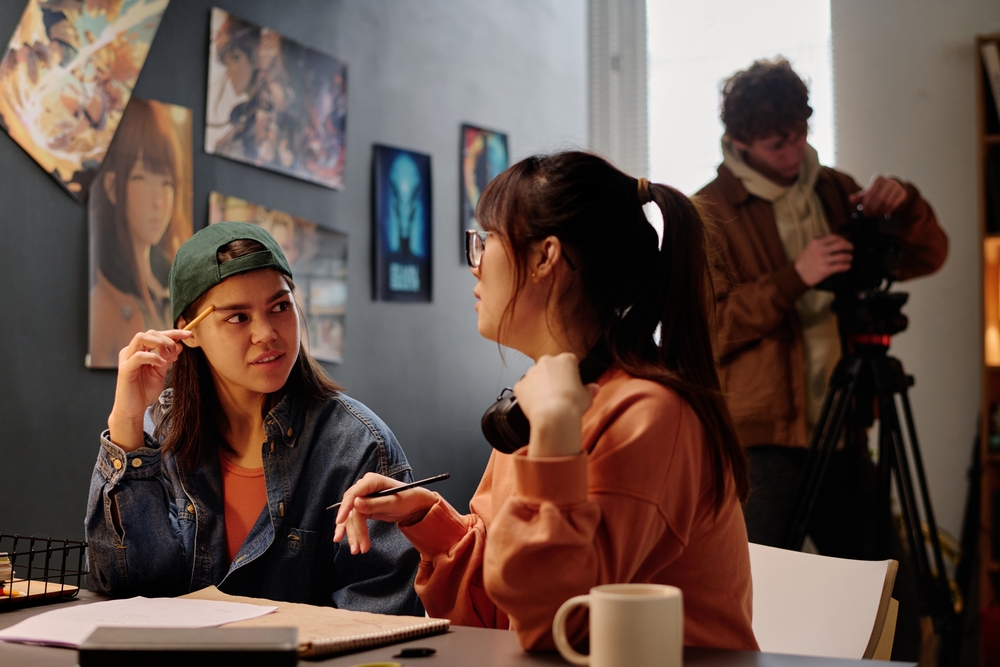Being able to read people isn’t a talent reserved only for mystics—it’s a skill anyone can develop. Figuring out someone’s vibe at work, a party, or your family and relationship dynamics can improve your interactions. Here are 15 psychological tips to help you read people like a pro.
1. Watch Out for Microexpressions

These tiny, split-second facial expressions flash across someone’s face before they can hide them. They can reveal real emotions like anger, surprise, or sadness, even when the person is trying to keep it cool. It’s easy to miss these quick expressions, but if you train yourself to catch them, you’ll see what someone feels, even if their words say otherwise.
2. Keep Your Eye on Their Hands

People’s hands often reveal more than they realize. Are they fidgeting with objects, tapping their fingers, or clenching their fists? These movements often happen when someone is anxious or uncomfortable. Relaxed hands, on the other hand, signal calmness. It’s easy to overlook hand movements, but once you start paying attention, you’ll be surprised by how much they tell you about a person’s emotional state.
3. Pay Attention to Their Gaze

The eyes are windows to the soul. If someone avoids eye contact, they might be uncomfortable, hiding something, or feeling insecure. On the flip side, too much intense eye contact can feel forced, which might suggest they’re trying a little too hard to seem confident—or even deceptive. Watch how people use their eyes during conversations. Are they engaged, or are they looking for the nearest exit?
4. Observe Their Posture

How someone stands or sits can tell you a lot about their confidence and mood. If they’re sitting up straight, shoulders back, and relaxed, they probably feel comfortable and in control. If they’re slouched, fidgeting, or shrinking into themselves, they might feel insecure, stressed, or closed off. Posture gives you a read on how they feel about themselves—and you.
5. Listen to Their Voice

You can say the exact words in a calm or shaky, high-pitched tone, and they’ll come across completely differently. The tone of someone’s voice is packed with clues. A steady, calm tone usually means they feel confident or relaxed, while a nervous, rushed tone suggests anxiety. The next time you’re in a conversation, pay attention to what’s being said and how it’s being said.
6. Monitor Their Words and Actions

If someone’s words say one thing but their body language says another, trust the body language. People can control what they say, but it’s harder to control non-verbal cues. For example, if someone says they’re “fine” but hunched over, avoiding eye contact, and crossing their arms, they’re probably not fine. When reading people, always check if their actions match their words.
7. Check Out Their Smile

Not all smiles are created equal. A genuine smile lights up the whole face, especially around the eyes—those little crinkles at the corners are a dead giveaway. A fake smile, on the other hand, usually involves the mouth. If someone’s smiling but their eyes don’t seem happy, they might be faking it. Learning to tell the difference between natural and forced smiles can give you a better sense of whether someone is truly happy or just putting on a show.
8. Pay Attention to Pauses

Pauses in conversation can be telling. A quick pause is normal, but if someone takes an unusually long pause before answering a question, they might be carefully thinking about what to say—or what not to say. They could be trying to craft a response that hides something or avoids confrontation. Sometimes, what’s left unsaid is just as important as what’s said.
9. See If They Mirror Others

Mirroring is when people unconsciously copy the body language, gestures, or tone of the person they’re talking to. It’s a subtle sign that they feel connected to you. If you lean in, and they lean in, too, or if you cross your legs and follow suit, it’s usually a good sign that they’re engaged and comfortable. If someone’s not mirroring you, it could mean they’re not feeling the same level of connection or comfort.
10. Observe Their Personal Space Preferences

How close someone stands to you can reveal how comfortable they are. If they’re standing close, they likely feel comfortable and open with you. But if they keep their distance, especially when the situation calls for more closeness, it could indicate discomfort or a lack of trust. Personal space preferences vary from person to person, so it’s important to consider the context, but a sudden increase in distance can be a red flag.
11. Recognize Defensive Body Language

If someone crosses their arms, hunches their shoulders, or turns away, they might feel defensive or uncomfortable. These closed-off positions are signs of trying to protect themselves from a perceived emotional threat or an awkward topic. Open body language, like uncrossed arms and legs, shows a person is more relaxed and open to the conversation.
12. Watch for Lip Biting

When people feel nervous, unsure, or self-conscious, they might bite their lips, cover their mouths, or touch their faces. These gestures are often subconscious and reveal discomfort with what they’re saying—or hearing. It’s a small detail, but noticing these subtle movements can give you deeper insight into how someone feels.
13. Focus on Their Feet

People often forget to control their feet when trying to hide something. If someone’s feet are pointed toward the door or away from you, it could mean they’re mentally checked out or looking for a way to leave the conversation. Feet that are pointed toward you show interest and engagement. It’s a detail most people overlook, but once you start noticing it, it can be surprisingly revealing.
14. Beware of Changes in Behavior

If someone suddenly changes their behavior during a conversation—going from relaxed to tense, cheerful to quiet—it could mean something in the conversation hit a nerve. Maybe a specific topic made them uncomfortable, or they realized they needed to be more careful about what they were saying. Changes in mood or energy during a conversation often indicate more going on beneath the surface.
15. Listen to What They’re Not Saying

Sometimes, the most important part of a conversation is what’s left unsaid. If someone is dodging a particular topic, giving vague answers, or avoiding answering your questions, it could mean they’re hiding something or don’t want to face the truth. Silence or avoidance can speak volumes, especially when the rest of the conversation seems smooth.




